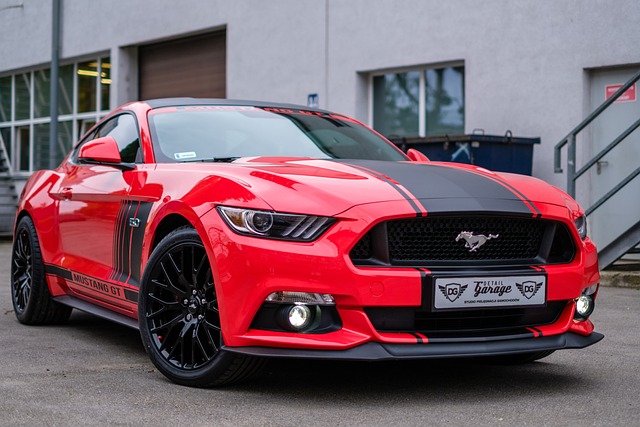Exploring the Latest Car Technology in the USA

In the rapidly evolving landscape of automotive technology, the United States stands at the forefront of innovation, shaping the future of transportation. From electric vehicles (EVs) to advanced safety features and autonomous driving capabilities, the latest car technologies in the USA are redefining the driving experience. This article delves into the cutting-edge advancements that are transforming the automotive industry and reshaping the way we perceive and interact with our vehicles.
- Electric Revolution: Rise of Electric Vehicles
One of the most significant trends in the automotive industry is the surge in electric vehicles. With a growing emphasis on sustainability and reducing carbon emissions, major automakers in the USA have been investing heavily in electric vehicle technology. Tesla, a pioneer in this space, has set the benchmark for electric cars with their Model S, Model 3, Model X, and Model Y. These vehicles combine high-performance capabilities with long-range electric power, challenging the traditional notion that electric cars compromise on speed and range.
Other automakers have followed suit, introducing their electric models. Chevrolet’s Bolt EV, Ford’s Mustang Mach-E, and the Lucid Air are among the noteworthy contenders, offering diverse options for consumers seeking an eco-friendly alternative. Additionally, the expansion of charging infrastructure across the country has alleviated range anxiety, making electric vehicles a more viable choice for everyday use.
- Advanced Driver Assistance Systems (ADAS)
Advancements in Advanced Driver Assistance Systems (ADAS) have ushered in a new era of vehicle safety. These systems employ a combination of sensors, cameras, and radar to enhance driver awareness and reduce the risk of accidents. Features like adaptive cruise control, lane-keeping assist, automatic emergency braking, and blind-spot monitoring are becoming commonplace in modern vehicles.
Tesla’s Autopilot, an advanced driver-assistance system, is leading the way in semi-autonomous driving capabilities. Although the technology is not fully autonomous, it showcases the potential for self-driving cars in the future. The constant refinement of ADAS technologies is a testament to the commitment of automakers to prioritize safety and minimize human error on the roads.
- Connectivity and Infotainment
In-car connectivity and infotainment systems have undergone a significant transformation, turning vehicles into digital hubs. The integration of smartphones with vehicle systems, wireless charging pads, and voice-activated controls has become standard in many new models. Apple CarPlay and Android Auto compatibility further enhances the driving experience, allowing seamless integration of smartphones for navigation, music, and communication.
Moreover, automakers are investing in advanced infotainment systems with large touchscreens, gesture controls, and artificial intelligence (AI) capabilities. These systems not only provide entertainment but also assist drivers with real-time traffic updates, weather forecasts, and personalized recommendations, creating a more immersive and enjoyable driving experience.
- Augmented Reality (AR) Head-Up Displays
Augmented Reality (AR) head-up displays are emerging as a game-changer in the automotive industry. Instead of a traditional instrument cluster, AR head-up displays project essential information onto the windshield, overlaying it onto the driver’s line of sight. This technology enhances situational awareness by providing navigation prompts, speed limits, and other critical data directly in the driver’s field of view.
BMW’s iDrive system with AR head-up display is a prime example of this cutting-edge technology. By seamlessly integrating information into the driver’s line of sight, AR head-up displays contribute to safer driving practices, reducing the need for drivers to divert their attention away from the road.
- Vehicle-to-Everything (V2X) Communication
The future of transportation lies in the interconnectedness of vehicles. Vehicle-to-Everything (V2X) communication enables cars to communicate with each other and with the surrounding infrastructure, including traffic lights and road signs. This technology holds the promise of improving road safety, optimizing traffic flow, and reducing congestion.
In the USA, pilot programs and research initiatives are underway to explore the potential of V2X communication. By sharing information about traffic conditions, road hazards, and potential collisions in real-time, V2X communication can enhance the overall efficiency and safety of the road network.
- Sustainable Materials and Manufacturing
In addition to advancements in driving technology, the automotive industry is also making strides in sustainable materials and manufacturing processes. Automakers are increasingly incorporating recycled materials, eco-friendly fabrics, and innovative manufacturing techniques to reduce their environmental impact.
Tesla, for instance, is using recycled materials in its vehicles, and Ford has introduced seats made from recycled plastic bottles. These initiatives not only contribute to environmental conservation but also set a precedent for the industry to prioritize sustainability throughout the entire lifecycle of a vehicle.
The latest car technology in the USA is reshaping the automotive landscape, emphasizing sustainability, safety, and connectivity. From the rise of electric vehicles to the integration of advanced driver assistance systems and the implementation of augmented reality displays, the future of driving promises to be smarter, safer, and more enjoyable. As the automotive industry continues to innovate, the road ahead holds exciting possibilities for a transportation revolution that goes beyond traditional concepts and embraces a new era of intelligent and eco-conscious driving.



